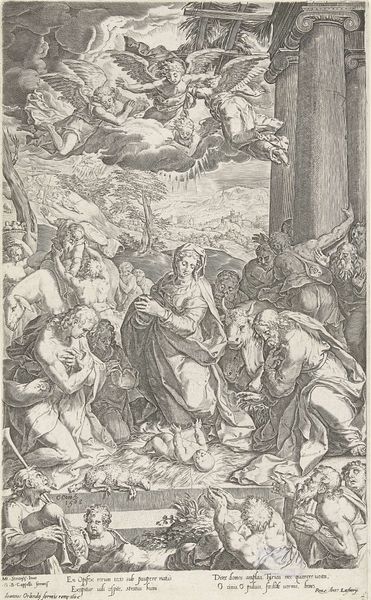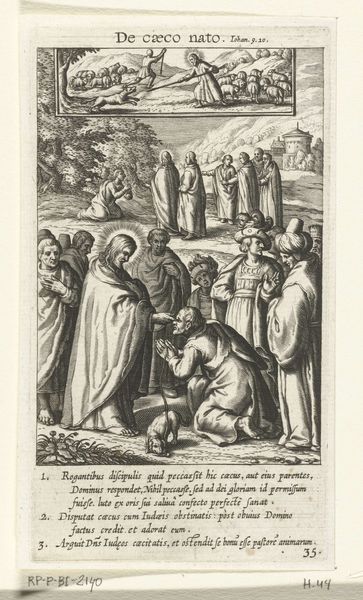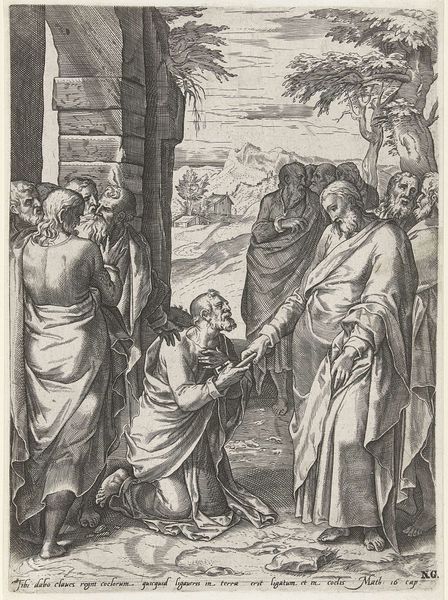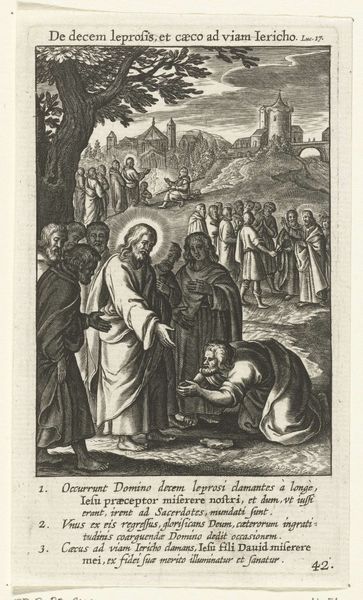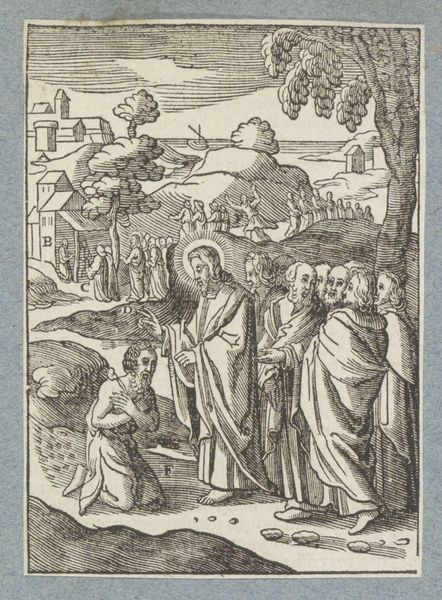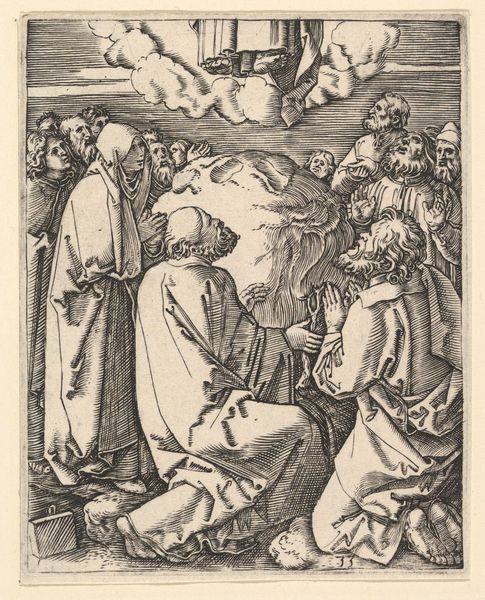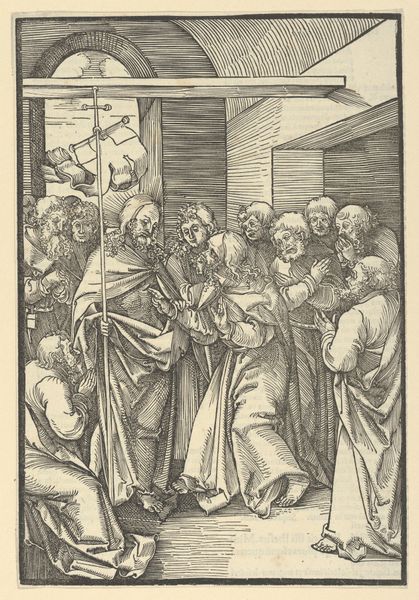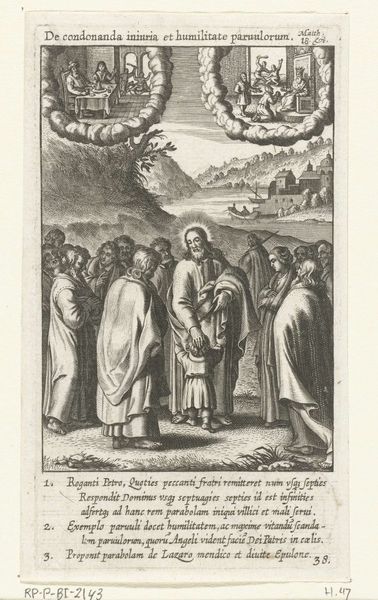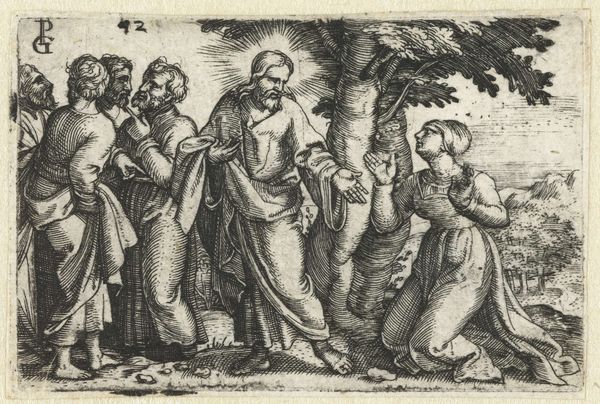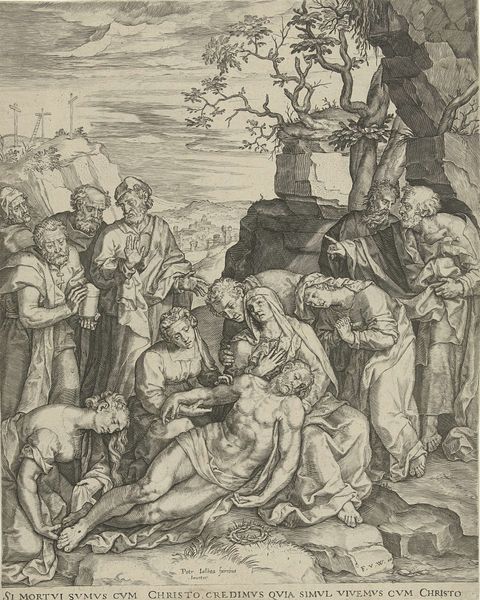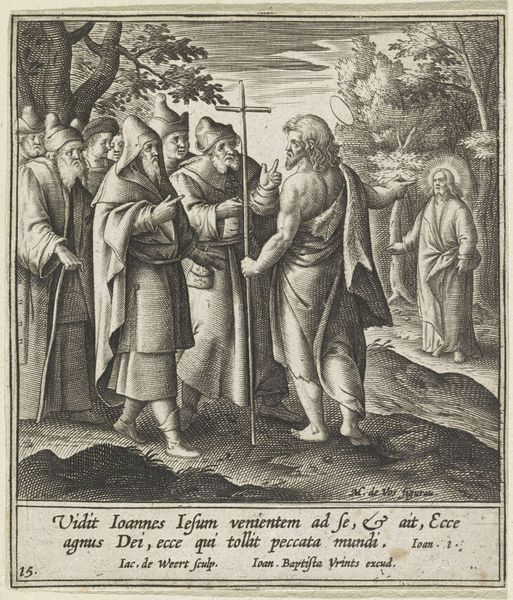
print, engraving
#
baroque
# print
#
figuration
#
line
#
history-painting
#
engraving
Dimensions: width 277 mm, height 451 mm
Copyright: Rijks Museum: Open Domain
Valentin Lefebvre made this print of H. Antonius van Padua healing the leg of the repentant son in the 17th century. It’s an etching, meaning that the image was incised into a metal plate with acid, then printed. Take a close look at the range of marks that Lefebvre was able to achieve, from the darkest shadows to the lightest lines defining the clouds. Notice, too, the cross-hatching that creates areas of tone. Think of the labor involved in the production process. Each line had to be carefully etched into the metal by hand, in reverse, and with an incredible control of pressure. Prints like this were luxury goods, and the result of intense skill and training. But they also helped to popularize the images they depicted. The circulation of prints like these blurred the boundaries between art, craft, and commodity, as the labor-intensive work became part of a wider visual culture.
Comments
No comments
Be the first to comment and join the conversation on the ultimate creative platform.

